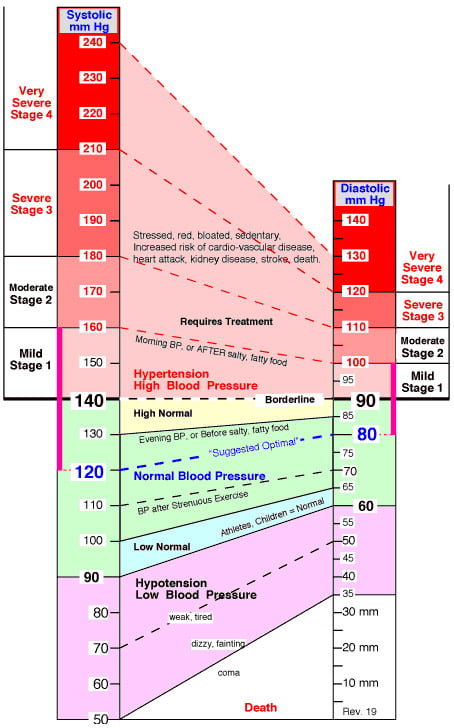Health Assessment
Pilates 4.Me uses the following health assessment indicators for the routine weight measurements that will encourage a healthy lifestyle and assist you with achieving your goals.
BMI (Body Mass Index)
BMI is used to predict the risk of heart disease and other chronic diseases. The higher the number, the greater the risk. Although BMI is based on weight and height, it doesn’t distinguish fat from muscle. An athlete may have a relatively high BMI simply because muscle is heavier than fat. BMI is not necessarily a good indicator of risk in seniors, as weight loss is as likely to be caused by a reduction in muscle and bone mass as by a reduction in fat. Moreover, research showed that those with a low BMI had a higher risk of heart attack than those with a high BMI.
BMI is a relatively straightforward equation that measures a person’s body fat by comparing their weight to their height:
BMI = ( Weight in Kilograms / ( Height in Meters x Height in Meters ) )
One of the major problems with this formula is that it cannot discriminate between fat and muscle. So while a world-class athlete may have very little body fat, there’s a good chance they may be classified as “overweight” by BMI standards, thanks to years of training to build muscle mass.
So if you can’t trust your BMI, what’s a better option? – your body fat percentage.
| BMI | < | 18.5 | Underweight | ||
| 18.5 | < | BMI | < | 25 | Normal |
| 25 | < | BMI | < | 30 | Overweight |
| 30 | < | BMI | Obese |
Body Fat %
Body fat percentage refers to the amount of body fat mass regarding the total body weight expressed as a percentage.

Body fat percentage (%) = {Body fat mass (kg) / Body weight (kg)} × 100
Our device uses the BI method to estimate your body fat percentage.
Body fat percentage is the amount of body fat as a proportion of your body weight. Depending on where fat is distributed in the body, it is classified as visceral fat or subcutaneous fat. Reducing excess body fat levels has been shown to reduce the risk of certain conditions such as high blood pressure, heart disease, diabetes and cancer.
Visceral Fat %
Visceral fat is in the internal abdominal cavity, surrounding the vital organs in the trunk (abdominal) area. This feature indicates the rating of visceral fat in your body. Nasty fat builds up around your organs, and a hallmark of metabolic syndrome is a proven precursor to diabetes and heart disease. Research shows that even if your weight and body fat remains constant, as you get older, the distribution of fat changes and is more likely to shift to the trunk area, especially post-menopause. Ensuring you have healthy visceral fat levels will reduce the risk of certain diseases such as heart disease, high blood pressure, and the onset of type 2 diabetes.
Too much visceral fat is thought to be closely linked to increased levels of fat in the bloodstream, which can lead to common diseases such as hyperlipidemia and diabetes, which impairs the ability of insulin to transfer energy from the bloodstream and using it in cells. To prevent or improve conditions of common diseases, it is important to try and reduce visceral fat levels to an acceptable level.
Rating:
| 1 | – | 9 | Normal |
| 10 | – | 14 | High |
| 15 | – | 30 | Very High |
This indicates you have an excess level of visceral fat. Consider making changes in your lifestyle through diet changes and increased exercise. Although not directly linked to increased risk of disease, it is thought to increase heart pressure and cause complications.
Subcutaneous fat is fat below the skin. Subcutaneous fat accumulates around the stomach and the upper arms, hips and thighs, and can distort the body’s proportions. Although not directly linked to increased risk of disease, it is thought to increase pressure on the heart and cause other complications. Subcutaneous fat is included in the body fat percentage.
Blood Pressure
Skeletal Muscle %
Muscle is divided into muscles in internal organs, such as the heart and skeletal muscle attached to bones used to move the body. Skeletal muscle can be increased through exercise and other activities. Increasing the ratio of skeletal muscle means that body can burn energy more easily, which means that it is less likely to turn to fat and makes it easier to lead an energetic lifestyle.
Resting Metabolism
Regardless of your activity level, a minimum level of caloric intake is required to sustain the body’s everyday functions. Known as the resting metabolism, this indicates how many calories you need to ingest to provide enough energy for your body to function.


